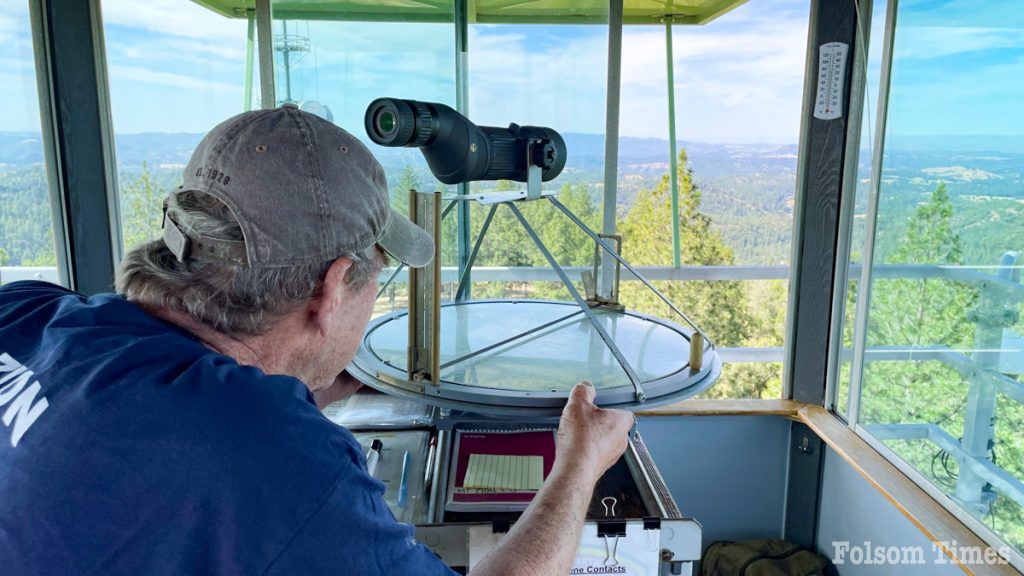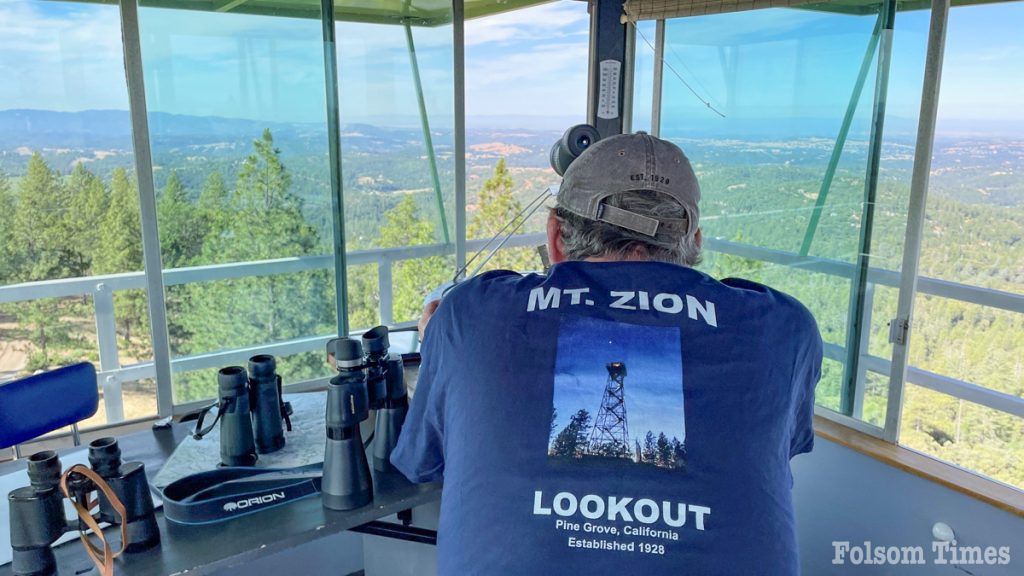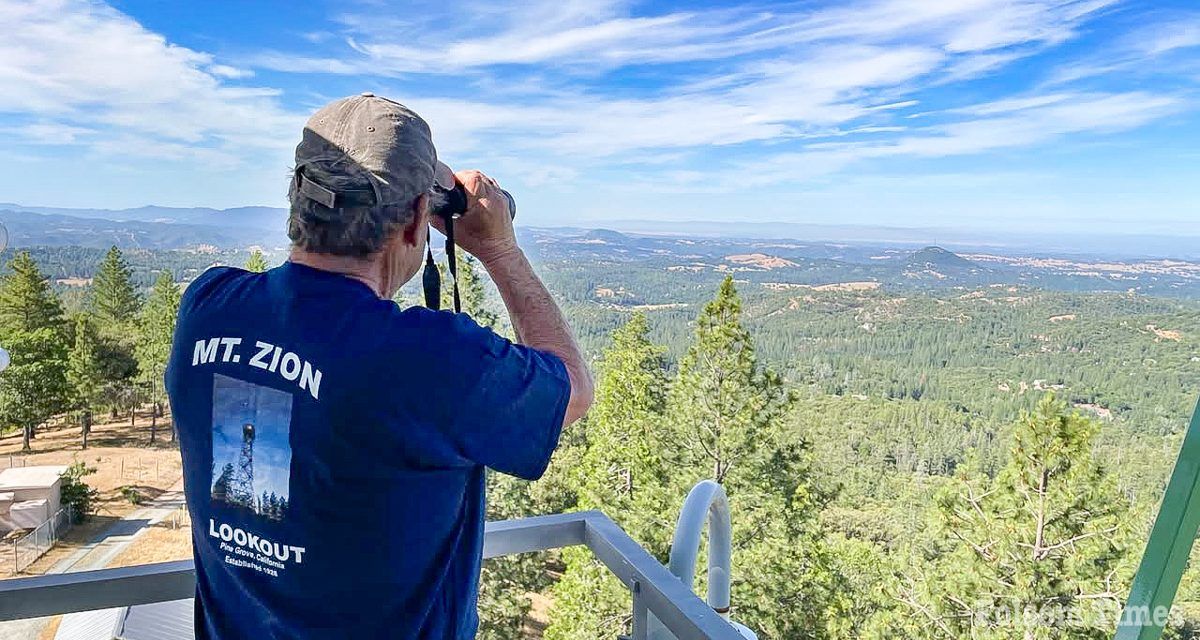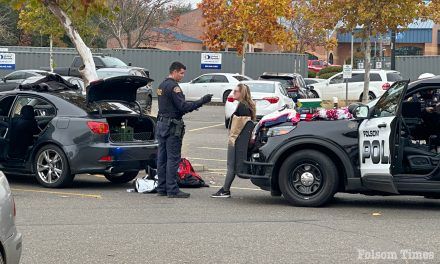As fire season intensifies across Northern California, the Mt. Zion Lookout Tower in nearby Amador County has once again become a crucial part of the region’s wildfire defense network. Officially back in service as of Sunday, the tower is now staffed by a dedicated team of volunteers who spend their days keeping watch over the surrounding landscape, scanning for the first signs of smoke and flames. Their role is not just important—it’s essential, especially during the dry summer months when wildfire risk skyrockets.
The Mt. Zion Lookout Tower has long served as a sentinel over Amador County. Located just outside Pine Grove, the tower stands within the Mount Zion Demonstration State Forest, an area that blends wildfire prevention efforts with public education and forest stewardship. At an elevation of approximately 2,800 feet, the tower provides sweeping views across the region, allowing observers to see as far as 60 miles on a clear day. This exceptional vantage point makes it one of the most strategic locations for early wildfire detection in the Sierra foothills.
While its primary responsibility is scanning the forests, canyons, and communities of Amador County, the Mt. Zion Lookout’s reach extends well beyond its immediate surroundings. Thanks to its elevated position and clear sightlines, trained observers stationed at the tower can also monitor areas of El Dorado County to the north, Calaveras County to the south, and even portions of western Alpine and northern Tuolumne counties to the east and southeast. The visibility also includes key travel corridors like Highway 88 and sections of Highway 49—both of which traverse fire-prone regions.

This broad surveillance capacity enables Mt. Zion to serve as a critical first-alert post for a wide range of foothill and mountain communities, many of which are located in what fire officials refer to as the Wildland Urban Interface (WUI), where homes and forests intermix. Rapid detection in these areas can mean the difference between a small brush fire and a major, fast-moving wildfire. For fire agencies working across jurisdictional lines, having an early set of eyes in the sky is a powerful tool.
The tower itself has a rich history dating back nearly a century. Originally built in 1928, the first lookout was a wooden structure that was quickly recognized as an essential part of the area’s fire preparedness plan. By 1930, it was replaced with the steel structure that still stands today—an imposing 70-foot tower equipped with a cab at the top where volunteers spend long shifts watching the landscape with binoculars, radios, and seasoned eyes trained to notice the smallest telltale wisp of smoke. This vital facility was funded through a partnership between state and county forestry agencies, recognizing its value in preventing catastrophic fires before they could spread.
While modern technology has introduced satellites, drones, and fire detection software, seasoned fire officials and observers still rely on the sharp focus and instincts of trained volunteers. Human observation remains one of the most reliable ways to detect new fires early, particularly in areas with varied terrain and tree cover. The Mt. Zion Lookout Tower continues to prove that even with all our digital tools, nothing replaces the vigilance of someone on-site with an unobstructed view and a deep understanding of their environment.
Volunteer lookouts typically commit to full-day shifts, some spending up to twelve hours at a time in the small cab, communicating with CAL FIRE dispatchers and local emergency agencies. These men and women come from a variety of backgrounds, many of them retirees, outdoor enthusiasts, or former emergency personnel who feel a calling to give back to their community in this unique way. Their training includes identifying different types of smoke, estimating distances, and learning the coordinates of surrounding landmarks to accurately report a fire’s location—often before a 911 call is ever placed.
The lookout also has an educational component. The Mt. Zion Demonstration State Forest, where the tower resides, is home to a short hiking loop that allows the public to visit the area and learn about its history and purpose. Although the tower itself is not always open to visitors, its presence serves as a living reminder of California’s long-standing battle with wildfire and the proactive steps that have been taken to protect our communities and ecosystems.
The Mt. Zion Lookout is part of a still-active network of approximately 50 to 60 staffed lookout towers across California, down from more than 600 in the early 20th century. Despite advances in fire detection technology, these towers continue to play an essential role in protecting remote and fire-prone areas, particularly in rugged terrain where cameras and drones may have limited effectiveness. The Mt. Zion tower is supported by agencies like CAL FIRE, but its lifeblood comes from community volunteers—ordinary citizens doing extraordinary work in the name of public safety.

Mt. Zion is not alone in its mission. Several other towers in the region contribute to a broader surveillance system. Among the closest active towers are Pilot Peak Lookout northwest of Mt. Zion, Leek Spring Hill in El Dorado County, and Banner Mountain and Wolf Mountain lookouts in neighboring Nevada County. Each offers its own range of visibility, providing critical coverage to areas such as western Alpine County, parts of Placer and Yuba counties, and deeper into the Sierra. Working together, these towers form a collaborative shield against the growing threat of wildfire throughout the Central Sierra region.
One notable structure in the area that reflects the state’s fire detection heritage is the Mt. Danaher Lookout in Camino, El Dorado County. While no longer actively staffed as a fire lookout, Mt. Danaher remains a significant part of California’s fire defense history. Built in 1949 as the tallest fire tower in the California Department of Forestry system—standing at 100 feet—it was originally developed in the 1930s by the Civilian Conservation Corps on land donated by the Michigan-California Lumber Company. Though not in use for direct fire spotting today, the site still contributes to wildfire monitoring through a high-tech ALERTCalifornia fire camera system, which provides real-time surveillance of surrounding fire-prone areas. It stands as a symbol of how California continues to blend historical infrastructure with modern tools in its wildfire preparedness strategies.
At the heart of this story are the volunteers—unsung heroes who sit quietly above the treetops, eyes on the horizon, ready to sound the alarm at the first hint of danger. Their role may be humble, but it’s one of the most critical lines of defense during fire season. As we move deeper into the hot, dry summer months, their vigilance is a cornerstone of the region’s preparedness strategy.
The Mt. Zion Lookout Tower stands as more than just a relic of the past; it’s a working symbol of how community effort, history, and modern fire defense can blend together. In an era where wildfires are increasingly frequent and severe, having such a reliable and historically rooted tool in place provides both peace of mind and practical support for our firefighting agencies. For Amador County and the many communities within its wide field of view, the tower isn’t just a watchpoint—it’s a lifeline.
The above article is part of Folsom Times’ 2025 wildfire season coverage, highlighting regional firefighting efforts, emergency preparedness initiatives, and the critical role of lookout towers and community volunteers in safeguarding Northern California. As temperatures rise and fire danger peaks, this ongoing series aims to keep readers informed about the people, tools, and strategies working behind the scenes to protect lives, property, and natural resources throughout the Sierra foothills and beyond.
Copyright © 2025, Folsom Times, a digital product of All Town Media LLC. All rights reserved. No portion of this publication may be reproduced, distributed, or transmitted in any form or by any means, without the prior written permission of the publisher.




